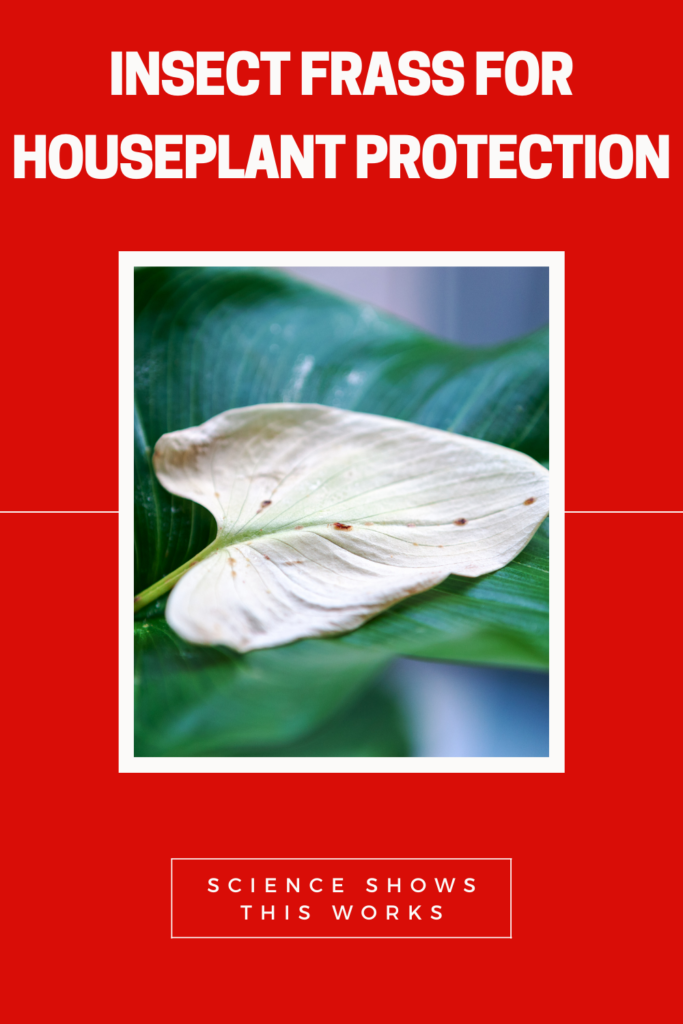- Canada’s Growing Zones Are Changing 2024 - January 12, 2024
- Attracting Wildlife To The Garden - May 16, 2023
- How To Garden Near A Septic Tank - May 9, 2023
Insect frass for houseplants is a subscriber-asked question and I absolutely fell in love with all the research. The question is what is the purpose of using insect frass for houseplants? Let’s look into the science behind why this product may be the best pest prevention for houseplants and the garden.
When I was initially asked this question I thought it was going to be like any other organic fertilizer. The simple explanation of you added and over time microbes will break down the product making it bioavailable for the plant. Another classic slow-release, won’t burn, not complete fertilizer. However, I was beyond wrong when I began dating into the scientific literature.
If you are new to this blog my name is Ashley and I am a soil scientist. I am located in a Canadian Zone 3 and a USDA Zone 4. I write articles, make YouTube videos, Instagram & Facebook posts all designed for Canadians and Cold Climate gardeners using science-based methods. If you are looking for anything specific be sure to let me know in the comments down below.
What is insect frass?
Insect Frass is a kind of smelly product. And this is because it is the exoskeleton of insects such as mealworms. The product is generally tan in colour and looks similar to sand. However, there are other products that contain chitin which is the main ingredient in insect fras. Products that contain chitin and would elicit a similar response would include crab meal, and vermicast. For the most intense reaction, actual insect frass for houseplants or garden plants is best.
Here’s a list of some chitin or insect frass for houseplant products that you can use:
Crab Meal – A great source of chitin
Liquid Insect Frass – Convenient solution that can be applied without repotting
Granular Insect Frass – Perfect for repotting, transplanting or bumping up
Nutrients In Insect Frass For Houseplants
With chitin products, there are of course some nutrients supplied. Nothing in the nutrient pro folio is particularly special in nature. It’s essentially similar to any other sort of organic fertilizer that can be mixed in with your potting soil or garden soil.
Because it’s a natural product there is no risk of potential burns and therefore overapplying is nearly impossible. You can always of course add the product to your compost and allow it to mix in and decompose over time. This will just help to make a little bit more nutrient-dense compost for your plants.
The Real Benefit Of Chitin Or Insect Frass For Houseplants
This is the part that absolutely blew me away when it came to chitin and/or insect fras. It is considered a 100% natural biopesticide. And it’s really good at doing two things and that is preventing both bugs and damaging fungi.
Chitin is able to cause an autoimmune response in the plant. This is very similar to a vaccine but for the plant world. This is done by signalling the plant to produce natural toxins that help ward off a pass from the surrounding soil.
The introduction of chitin in the rhizosphere of the plant also has been shown to help increase stronger cuticle production. The stronger cuticle of a plant means it is better protected against potential sapsuckers and leaf eaters.
You may be wondering how does chitin trigger this sort of response in a plant? It is done through its natural presence near the roots. Because this product is a derivative of bugs’ exoskeletons it is able to mimic similar chemicals to that of an active infection. The plant does not know the product is not a living bug about to attack. This is what we call a biomarker.
Chitin recognition immediately activates defence pathways within our plants. And this weekend a string of molecular mechanisms that help protect the plant as a whole from any invading predators.
Protection against harmful fungi
First off you’re probably thinking of harmful fungi? And the answer is yes you can have harmful fungus in your soil. However the addition of chitin results in a release of chemicals. These chemicals can easily degrade the carbon that makes up the hyphae walls. Again helping to protect the plant roots from harmful invaders.
How to use chitin or insect frass with houseplants
The best way of using chitin with house plants is to incorporate it into your potting soil. The key here is to ensure that the chitin is within the root zone. This is important because it will be how the plant determines whether or not to turn on its immune response.
If you desperately want to give chitin a try but don’t want to repot try top dressing or placing it at the bottom of the pot. This only needs to be reapplied when you notice there is no more visible chitin in the soil. The application of this product will help her protect your house plants against pests in the future.
How to use chitin or insect frass with your garden plants
Whenever possible try to root place the product. This means you would be adding the chitin at the time of seeding or transplanting outdoors. If this is not possible you can of course top dress with the product and try to water it into the soil.
Overall I think chitin and/or insect fras is a great addition for houseplant soil and outdoor plants. This product is able to cause an immune response in the plant that can protect against future invaders. Let me know what you think in the comments below.

